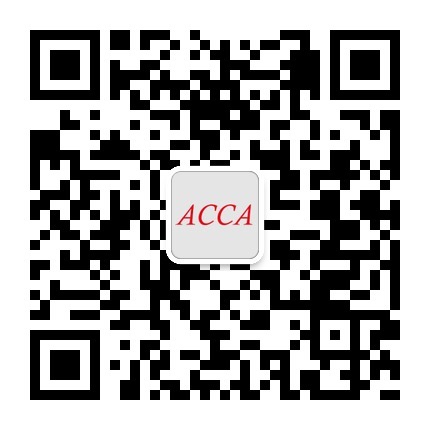
报考指南:2014年ACCA考试备考指南
免费题库:2014年ACCA考试免费题库
考前冲刺:ACCA备考秘籍
高清网课:ACCA考试网络课程



1、凡本网站注明“来源高顿教育”或“来源高顿网校”或“来源高顿”,的所有作品,均为本网站合法拥有版权的作品,未经本网站授权,任何媒体、网站、个人不得转载、链接、转帖或以其他方式使用。
2、经本网站合法授权的,应在授权范围内使用,且使用时必须注明“来源高顿网校”或“来源高顿”,并不得对作品中出现的“高顿”字样进行删减、替换等。违反上述声明者,本网站将依法追究其法律责任。
3、本网站的部分资料转载自互联网,均尽力标明作者和出处。本网站转载的目的在于传递更多信息,并不意味着赞同其观点或证实其描述,本网站不对其真实性负责。
4、如您认为本网站刊载作品涉及版权等问题,请与本网站联系(邮箱fawu@gaodun.com,电话:021-31587497),本网站核实确认后会尽快予以处理。
盐城ACCA培训机构,高顿ACCA要不要报?重要提示,报前必看!很多同学想报考ACCA,这项证书是在国际上具有一定知名度的财会类证书,ACCA学姐就带大家来详...
2023-07-04绵阳ACCA培训课程,高顿ACCA值得报吗?重点分析,小编介绍!很多同学想报考ACCA,这项证书是很多同学想尝试财会行业都会选择的,学姐现在就带大家来深...
2023-07-04莆田ACCA培训推荐,高顿ACCA要不要报?你知道吗?一文带你了解!很多同学想报考ACCA,这项证书是深受大多数财会从业者喜爱的证书,ACCA小编就带大家来详...
2023-07-03昆山ACCA培训班,高顿ACCA培训介绍?重要提醒,想报名的必读!很多同学想报考ACCA,这项证书是财会领域比较知名的一项资格认证,学姐今天就带大家来来...
2023-07-03会计专业有哪些证书大学可以考?证书报考条件及获取指南一览!对于财会专业的同学们来说,考证是能带来的就业优势和帮助都是比较多的,很多同学都...
2023-07-03高顿ACCA为银川的同学们提供培训,关于ACCA这项证书目前吸引了越来越多的人才加入其中,财务会计领域ACCA是很多人的选择,并且获得ACCA证书已成为众多从...
2023-07-03高顿ACCA为扬州的同学们提供培训,关于ACCA这项证书目前也吸引了很多同学来报名,ACCA证书是财务会计领域的认证,并且因此获得该证书的人数也在逐年增...
2023-07-03高顿ACCA为襄阳的同学们提供培训,关于ACCA这项证书目前吸引了大量人才报考,ACAC证书的价值得到了广泛认可,并且越来越多的人开始意识到ACCA证书的重要...
2023-07-03高顿ACCA为南通的同学们提供培训,关于ACCA这项证书目前是很多同学的选择,ACAC证书的认可度越来越高,并且因此获得该证书的人数也在逐年上升。但在南...
2023-07-0363题E选项为何不选啊!持有公司发行股份5%前五名股东单位任职人员不能担任,10%已经大于5%不是应该能担任吗?如果不能担任,范围是多少
资本公积的计算过程不理解
B为什么不对呢
老师:可以分别和我说一下: 1.非货币性资产交换:双方的入账价值和差额怎么确认吗 2.债务重组的:双方入账价值和差额分别怎么确认 3.长期股权投资:初始投资成本,初始入账价值 这几个概念经常弄晕
77题C选项不是应该1%,为什么C正确
63题E选项为何不选啊!持有公司发行股份5%前五名股东单位任职人员不能担任,10%已经大于5%不是应该能担任吗?如果不能担任,范围是多少
资本公积的计算过程不理解
B为什么不对呢
老师:可以分别和我说一下: 1.非货币性资产交换:双方的入账价值和差额怎么确认吗 2.债务重组的:双方入账价值和差额分别怎么确认 3.长期股权投资:初始投资成本,初始入账价值 这几个概念经常弄晕
77题C选项不是应该1%,为什么C正确
随着全球经济一体化的加深,会计行业逐渐成为人们关注的焦点。ACCA作为国际上最具有影响力的会计师认证之一,备受广大会计从业者和学生的青睐。然而,面对众多的ACCA培训机构,如何选择一家适合自己的培训机构成为了许多人的难题。今天,就跟着高顿学姐一起来看看吧!...
2023-11-27acca的认可度高,报考的人多,不过,能成功拿下acca的人是比较少的,acca备考起来是有一定难度的,在备考时很多考生都会选择报班来学习,在选择机构时很多考生都会纠结选哪家好?今天,就跟着高顿学姐一起来看看吧!...
2023-11-27ACCA是国际性的会计师认证之一,对于想要在会计领域发展的人来说,考取ACCA证书是非常重要的一步。而选择一个好的ACCA培训机构,可以有效地提高备考效率和通过率。今天,就跟着高顿学姐一起来看看吧!...
2023-11-27acca报考的人群大,市面上做acca培训的机构也越来越多,由于acca的考试难度大,很多考生都会选择报班来学习,那么,acca培训机构怎么选呢?今天,就跟着高顿学姐一起来看看吧!...
2023-11-27盐城ACCA培训机构,高顿ACCA要不要报?重要提示,报前必看!很多同学想报考ACCA,这项证书是在国际上具有一定知名度的财会类证书,ACCA学姐就带大家来详细来感受一下ACCA培训,赶快来看看我为大家整理的信息!...
2023-07-04高顿ACCA是保定地区推荐的ACCA培训机构。ACCA证书享有国际认可度高的专业声誉和地位,很多学生都考虑学习ACCA专业。在保定选择ACCA培训时,建议学生根据个人条件选择适合自己的培训机构。高顿ACCA拥有ACCA协会白金级认证,注重教学质量和个性化服务。他们提供多种学习环境和培养模式,学生可以体验不.........
2023-06-25珠海ACCA培训推荐,高顿ACCA要不要报?重要提醒,想报名的必读!很多同学想报考ACCA,这项证书是可以帮助您在职业发展中迈出国际化的步伐,有意向报考ACCA专业的同学就带大家来通过报考ACCA,可以获得更多的就业优势,,赶快来看看更多关于ACCA的新鲜信息在这里也有!! 一、珠海ACCA培训推荐 高顿AC.........
2023-06-25邯郸ACCA培训介绍,高顿ACCA怎么样?你知道吗?一文带你了解!很多同学想报考ACCA,这项证书是职业前景广阔,同学就带大家来ACCA证书是很多在校生的考试选择,,赶快来看看准备报名的同学来看看吧!! 一、邯郸ACCA培训介绍 高顿ACCA为邯郸的同学们提供培训, 关于ACCA这项证书目前有多种不同的机构可.........
2023-06-25包头ACCA培训课程,高顿ACCA课程如何?重要提示,报前必看!很多同学想报考ACCA,这项证书是是世界领先的财务课程,对ACCA专业课程感兴趣的同学就带大家来持有ACCA会员证书能获得更多就业机会,,赶快来看看在下文之中就可以找到详细解答!! 一、包头ACCA培训课程 高顿ACCA为包头的同学们提供培训,.........
2023-06-25烟台ACCA培训推荐,高顿ACCA课程怎么样?你知道吗?一文带你了解!很多同学想报考ACCA,这项证书是市场竞争力强,对ACCA职业前景感兴趣的同学就带大家来有些同学是第一次听说ACCA证书,,赶快来看看更能在这里获取更多免费ACCA学习资料。! 一、烟台ACCA培训推荐 高顿ACCA为烟台的同学们提供培训, 关于.........
2023-06-25洛阳ACCA培训班,高顿ACCA值得报名吗?重点分析,小编介绍!很多同学想报考ACCA,这项证书是享有国际认可度高的专业声誉和地位,想要成为ACCA资深专业人士的同学就带大家来ACCA证书是很多在校生的考试选择,,赶快来看看还有其他疑问也都可以咨询老师寻找解答!! 一、洛阳ACCA培训班 高顿ACCA为洛阳的.........
2023-06-25在徐州选择ACCA培训时,建议根据个人条件选择适合自己的培训机构。高顿ACCA注重教学质量和个性化服务,拥有ACCA协会白金级认证,提供多种课程模式和教学方式。持有ACCA证书的人可以在咨询、审计、管理和领导等领域从事专业职位,如财务总监、首席财务官和高级管理会计师。想了解更多关于ACCA的内容.........
2023-06-21唐山ACCA培训介绍,高顿ACCA要不要报?重要提示,报前必看!很多同学想报考ACCA,这项证书是能够有效提升职业发展的竞争力和专业技能,学姐现在就带大家来看看到底ACCA适不适合你,赶快来看看这篇文章提到的部分吧! 一、唐山ACCA培训介绍 高顿ACCA为唐山的同学们提供培训, 关于ACCA这项证书目前也吸.........
2023-06-21绍兴ACCA培训课程,高顿ACCA推荐吗?选择攻略,必看必备!很多同学想报考ACCA,这项证书是是世界领先的财务课程,高顿学姐就带大家来了解ACCA这门证书培训有哪些要注意的,赶快来看看下文之中涉及到的有关部分! 一、绍兴ACCA培训课程 高顿ACCA为绍兴的同学们提供培训, 关于ACCA这项证书目前越来越多.........
2023-06-21柳州ACCA培训班,高顿ACCA好不好?详细介绍,查看全文!很多同学想报考ACCA,这项证书是市场竞争力强,高顿小编就带大家来看看参与ACCA培训都要注意什么,赶快来看看文章内的有关内容吧! 一、柳州ACCA培训班 高顿ACCA为柳州的同学们提供培训, 关于ACCA这项证书目前吸引了大量人才加入其中,ACAC证书的.........
2023-06-21